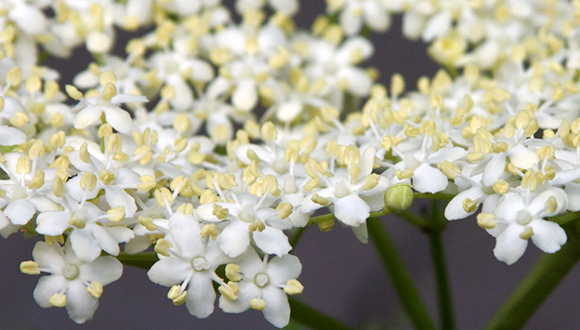The fragrance of flowers depends on the fungi and bacteria that coat them
A new study led by Josep Peñuelas, research professor at CREAF and the Spanish Council for Scientific Research (CSIC), has shown that if we do away with fungi and bacteria which live on flowers, the quantity and composition of their perfume will be changed entirely.

We all know the soft fragrance of lavender. Its characteristic perfume is caused by chemicals called volatile organic compounds (VOCs). Up to now it was known that flowering plants used various biochemical pathways to produce a wide spectrum of VOCs that give plants their own, characteristic aroma. Now, a study from the CREAF, in collaboration with the Autonomous University of Barcelona (UAB), has discovered that flowers smell like more than just flowers. According to the study published in Nature’s Scientific Reports, the perfumers of the planet, the protagonists in creating the most delicate floral aromas, are not just the flowers if not also the microorganisms and fungi which coat them.
The researchers carried out a series of experiments in which they coated elderberry flowers with powdered wide-spectrum antibiotics. In plants treated with antibiotics the internal floral VOC contents and respiration remained stable, demonstrating that the antibiotics caused neither damage to nor stress in the plants. However, the quantity of aromatic compounds emitted by the flowers, giving them their smell, decreased dramatically in those treated with antibiotic. Additionally, the antibiotics had changed the kinds of compounds emitted by the flower: they stopped creating some compounds. As a consequence, generally speaking, the bouquet(or characteristic scent) of elderberry flowers was completely different for up to seven days after antibiotic treatment.
“With antibiotics, the elderberries, despite having healthy flowers, didn’t smell like elderberry. The result was not that antibiotics had affected the plant, but that they had eliminated the microorganisms and fungi which live on flowers. This demonstrates the clear role of fungi and bacteria in the smells and perfumes provided by flowers,” comments Josep Peñuelas.
The authors of the study confirm that bacteria and fungi both have the ability to produce aromatic compounds such as linalool. It is important to keep in mind that the plant responds to some of these microorganisms, also emitting special chemical compounds. According to Jaume Terradas, CREAF founder and emeritus professor of Ecology of the UAB who also participated in the study, the microbiota of flowers appear to have a key role in final fragrance, with relevant implications.
Something to take into account concerning pollination
In light of the current “pollination crisis” caused largely by the decline of pollinator insects but also by the alteration of floral aromas, studies such as this one provide valuable knowledge that can lead to improvements in the circumstances surrounding the problem.
Volatile organic compounds’ fragrance allows chemical communication between plants and other organisms. Various tissues of the plant including flowers emit these compounds to call attention to them, including from pollinators.
“If the odors which guide insects are produced largely by fungi and microorganisms, we will have to revisit, for example, the effects of the use of some fungicides in crops since they could change fragrances and the future pollination of those plantations,” concludes Professor Peñuelas.
Article:
Peñuelas J, Farré-Armengol G, Llusia J, Gargallo-Garriga A, Rico L, Sardans J, Terradas J, Filella I. Removal of floral microbiota reduces floral terpene emissions. Sci Rep. 2014 Oct 22;4:6727. doi: 10.1038/srep06727. http://www.nature.com/srep/2014/141022/srep06727/full/srep06727.html







